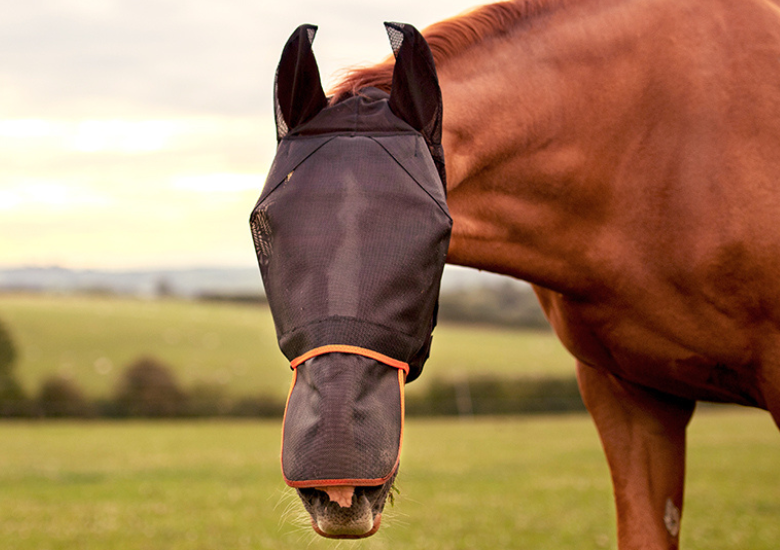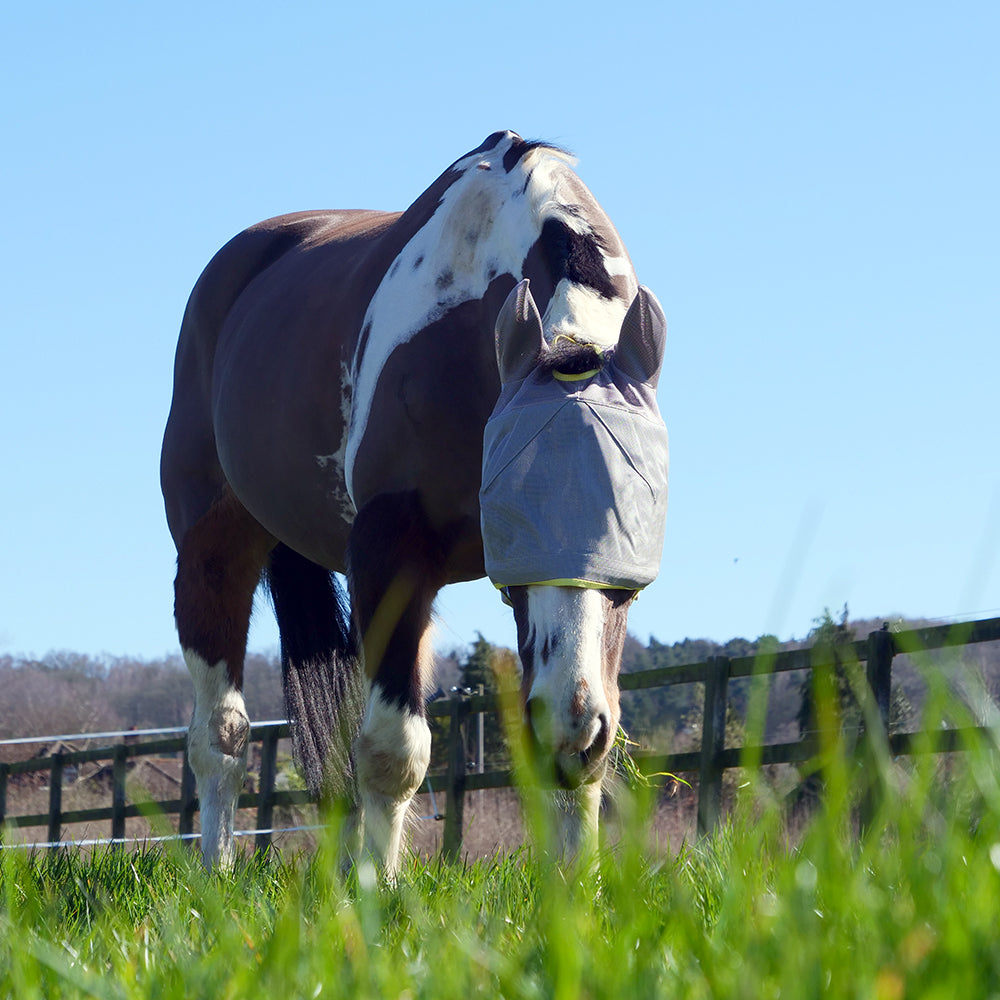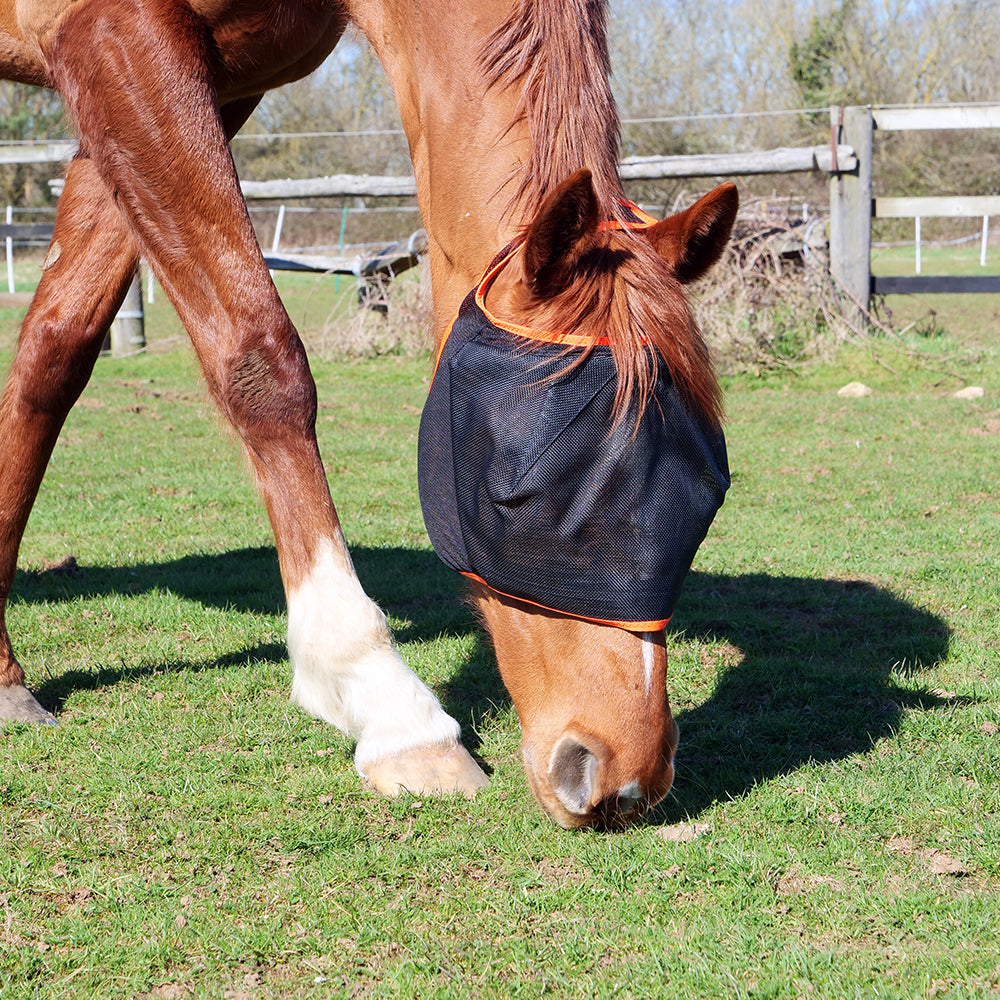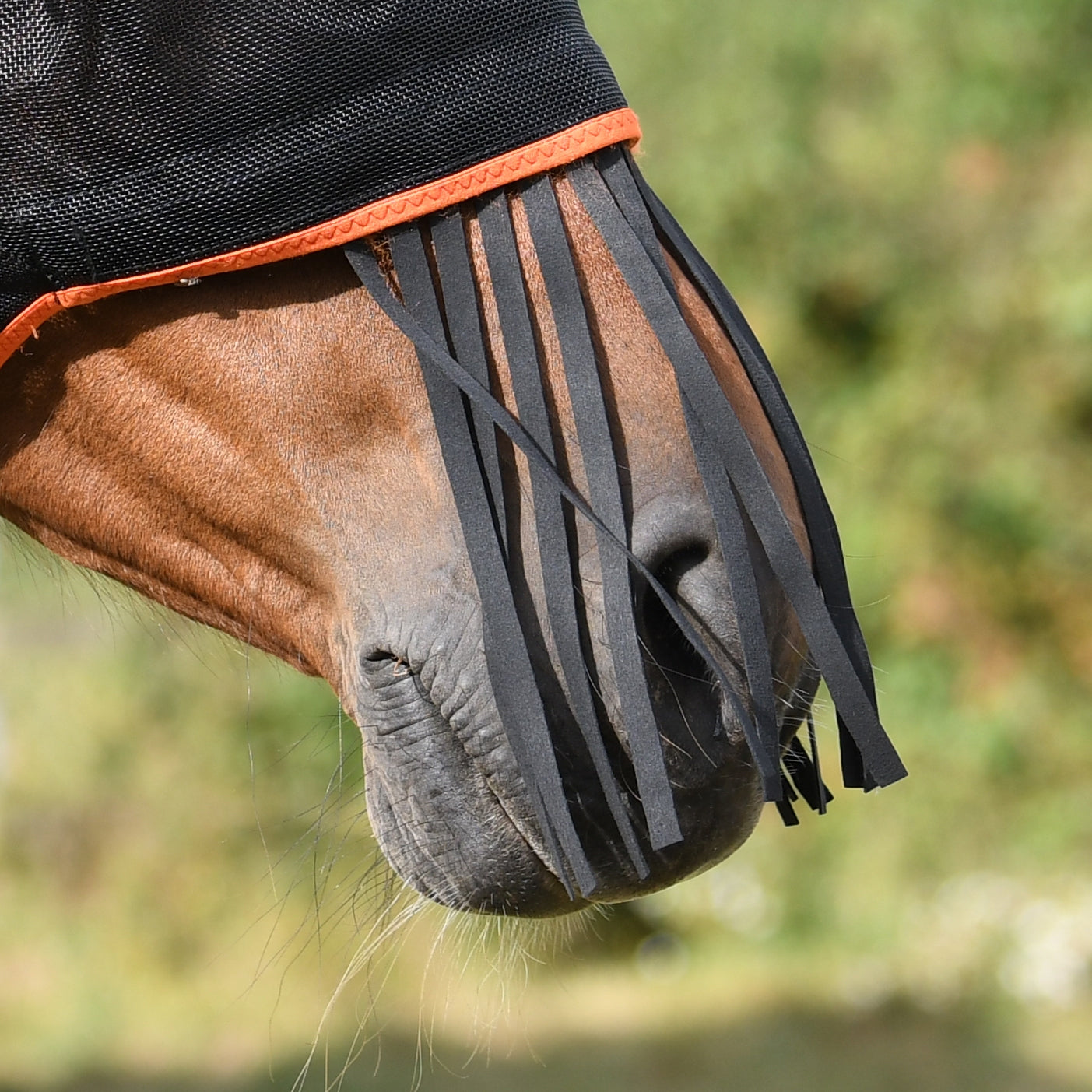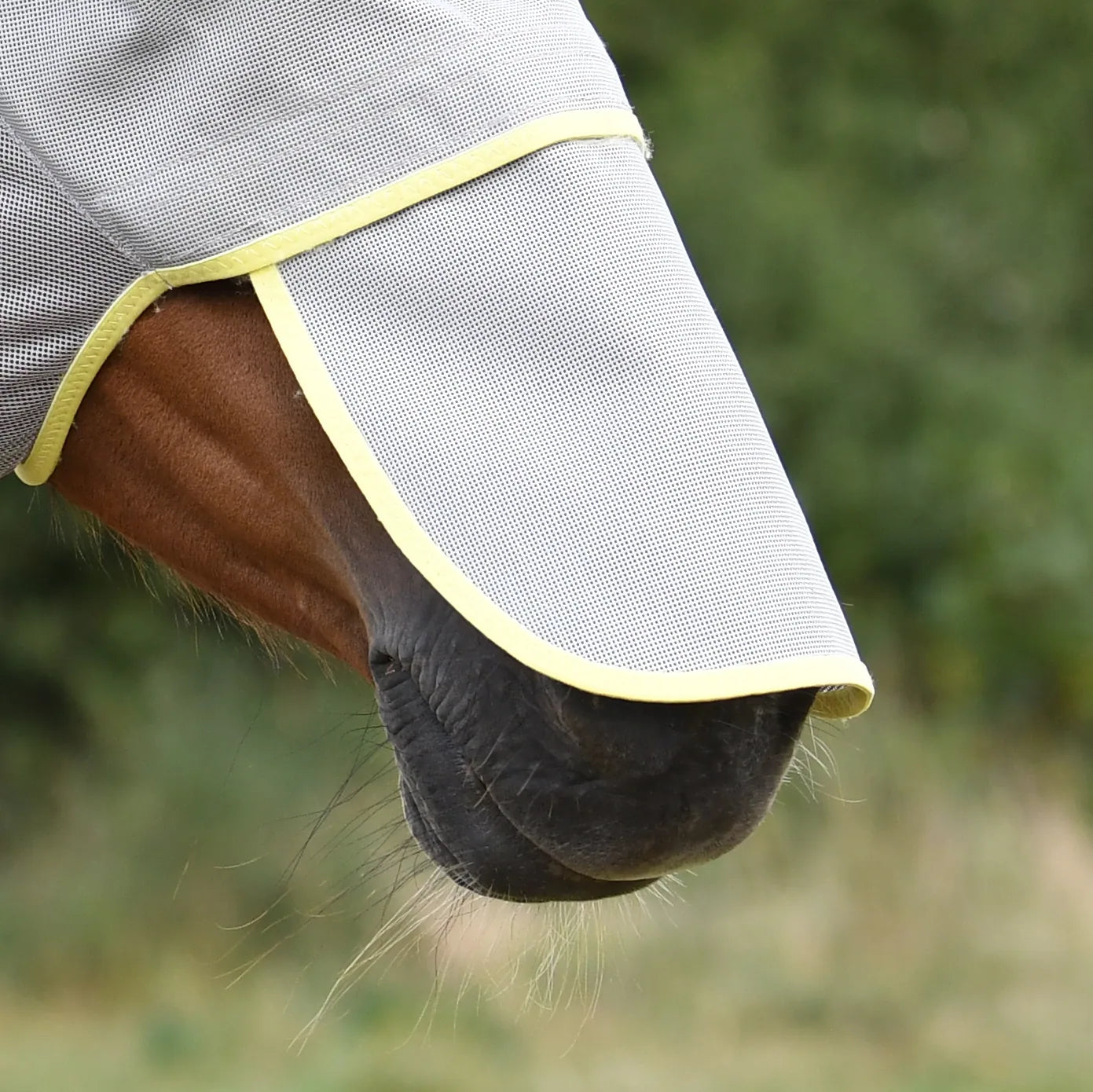What else is there to consider?
How do I Find the Best Fly Mask for Fit?
As a general rule, we would recommend for you to base the size of your fly mask on the size of your horse’s bridle. This is certainly the case for the Field Relief range of fly masks, but will also give you a good starting point for other brands.
Regardless of make, your fly mask should fit snugly (two fingers) around your horse’s face with no gaps over the poll or around the nose. Excessive space in these areas will make it easier for the fly mask to shift on your horse’s head, or pull off completely. To help with this, look for a fly mask with stretch seams and plenty of adjustability; the Field Relief range all feature stretch seams for a secure fit, with the Midi (with and without ears) also boasting hook and loop adjustment over the poll as well as under the cheeks for a more tailored fit.
How Should a Fly Mask Fit around my Horse Eyes?
Contrary to the snug fit needed elsewhere on your horse’s head, your fly mask should allow for plenty of room over the eye area. Vets agree that a mesh sitting directly against the eye has the potential to rub and cause damage to the eye and surrounding skin. Not only this but too tight a fitting mask may mean your horse’s eyelashes catch against the mesh, causing significant discomfort to your horse when blinking.
Be sure to choose a fly mask that provides some kind of structure over the eye area, and that you are confident it will not collapse down onto your horse’s face through the course of the day. For an example of what to look for, the Field Relief range of fly masks have all been designed with strategic darts over the front of the mask to ensure a stable, roomy fit with good clearance over the eyes.
Does UV Protection Really Matter?
Horses with little or no skin pigmentation around their eyes and muzzle are going to be more susceptible to the effects of the sun. Like pale-skinned humans, exposure to the sun can cause squinting, watery eyes, sunburn, and in the long-term has the potential to develop in to cataracts or even cancer. A UV protective fly mask helps to block some of this damaging radiation from reaching the skin. In the short term, this helps to make your horse more comfortable, help to prevent sunburn, and could help to militate against more serious ailments in the future. The Field Relief range are tested to block out over 70% of harmful UV rays.
Does the Colour of a Fly Mask Make a Difference?
There has been wide debate over recent years as to what the most suitable colour for a fly mask is, however there is no conclusive evidence to suggest that the colour makes any difference to the effectiveness of the fly mask. Many argue that a fly mask with a darker colour mesh is best as it provides a ‘sunglasses’ effect for photosensitive horses, but conversely it can be argued that as dark colours absorb heat a lighter coloured mask is best to reflect radiation instead. These may be points worth considering when purchasing a new fly mask, however there is no scientific evidence to support the significance of either theory.
Can I leave my Horse’s Fly Mask on Overnight?
Generally, a horse doesn’t need to wear a fly mask at night. If your horse has an eye condition and has been advised by a vet to wear a fly mask overnight, Field Relief fly masks can be left on 24/7.
For horses out 24/7, we recommend making sure you check your horse regularly and allow him time without the mask to prevent the risk of rubbing.
